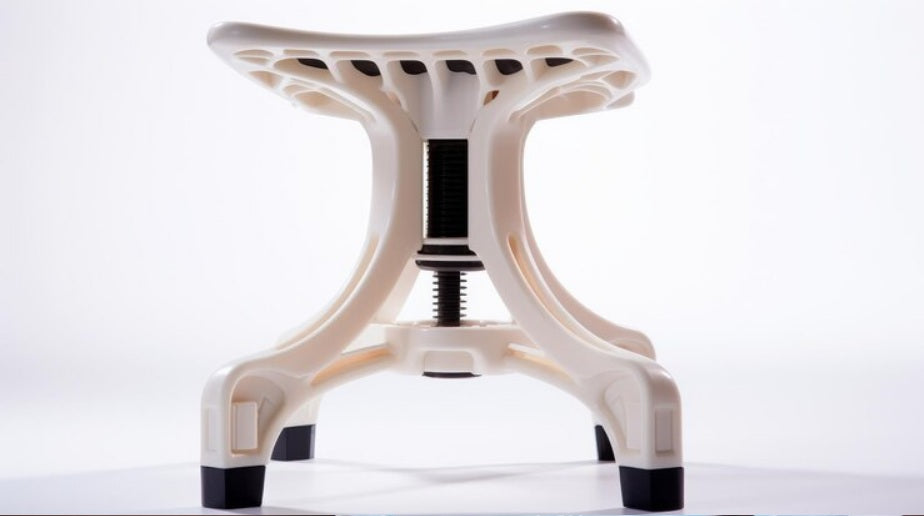

· By Trevor Horne
Saddle Stool Adjustments To Prevent Common Posture Issues
Medical professionals spend countless hours attending to patients, often seated for extended periods. While focusing on patient needs, they may neglect their own posture, leading to common issues like back pain, shoulder strain, and neck discomfort. These posture-related problems can significantly impact daily work efficiency and overall well-being. One solution is adjusting saddle stools properly, enhancing comfort and reducing strain.
Proper adjustments of saddle stools can aid in alleviating these common discomforts. Unlike traditional chairs, saddle stools promote an open hip angle, which encourages a natural spine posture. This article delves into the significance of these adjustments for preventing posture issues in clinical settings.
Understanding Common Posture Problems in Clinical Settings
Medical settings present numerous challenges, especially concerning posture. Here are some common posture issues:
- Back Pain: Spending long hours in incorrect postures can lead to chronic back pain. Improper chair settings often cause constant tension in the lower back.
- Shoulder Strain: Repeated reaching and stretching can strain shoulder muscles, particularly if the seating arrangement is not optimal.
- Neck Discomfort: Incorrect neck alignment, often from looking down or without proper support, leads to frequent neck pain.
Understanding how seating posture can contribute to these ailments is essential. Often, incorrect seating height or tilt can increase pressure on the lower back and joints, exacerbating discomfort. A saddle stool, when not adjusted suitably, might not provide the intended ergonomic benefits, potentially heightening rather than alleviating these issues. Tailoring the stool's setup to the user's body can help in distributing weight evenly, reducing stress on pressure points, and allowing for a more natural movement throughout the day.
Key Adjustments for Saddle Stools to Improve Posture
Making the right adjustments is crucial in tapping into the benefits of a saddle stool. Here's how to set up your stool for optimal posture:
1. Seat Height Adjustment: The height should allow your feet to rest flat on the floor, promoting balance and comfort. Adjust the seat so that your hips are slightly higher than your knees, supporting an open hip angle and reducing back strain.
2. Seat Tilt Adjustment: Tilting the seat forward can encourage a slight arch in the back, which is a more natural posture. This adjustment can particularly help in reducing pressure on the lumbar spine.
3. Foot Placement: Keep your feet shoulder-width apart to provide stability. This distribution helps in maintaining a balanced position and supports the body's natural posture.
By focusing on these key adjustments, medical professionals can reap the full benefits of their saddle stools, fostering a healthier posture and greater comfort during the day.
Practical Tips for Maintaining Good Posture with Saddle Stools
For those who use saddle stools daily, maintaining good posture is key. Simple habits and routines can make a significant difference in comfort and health:
- Regular Posture Checks: Make a habit of checking your posture at different times throughout the day. Pay attention to the alignment of your spine and adjust your position if you notice any strain.
- Short Breaks and Stretches: Integrate short breaks into your routine to stand, walk, or stretch. These activities encourage muscle relaxation and can prevent stiffness. Think of it as a chance for a mini recharge to keep you focused and fresh.
- Ergonomically Designed Stools: Consider using a saddle stool designed with ergonomics in mind. Features like adjustable height, cushioned seats, and tilt options ensure that each user finds optimal comfort.
With these practical approaches, saddle stools can be an ally in maintaining posture health in busy clinical environments.
Choosing the Right Saddle Stool for Optimal Posture
Finding the right saddle stool plays a crucial role in preserving posture and enhancing comfort. When shopping for one, keep a few features in mind:
- Ergonomic Features: Ensure that the stool offers adjustable height and seat angle controls. These options allow each user to customize the stool to their body type and preferences.
- Quality Material: Look for stools made from high-quality materials that offer durability and comfort. A well-cushioned seat contributes significantly to overall comfort.
- Design and Stability: The stool should have a stable base to prevent tipping. Consider stools with a robust design that can comfortably support the user while allowing easy movement.
Selecting a stool with these features facilitates healthier posture, making long hours less tiring and more productive.
Enhancing Clinic Efficiency with Proper Saddle Stool Use
Integrating properly adjusted saddle stools into clinical settings can boost overall efficiency. By offering physical support, these stools allow medical professionals to focus more on work and less on discomfort.
Imagine a typical day where practitioners can seamlessly pivot and move between tasks without the bother of adjustments or discomfort. A well-suited saddle stool promotes efficiency by reducing fatigue and encouraging better work habits. This streamlined workflow makes routine tasks smoother and can lead to improved patient care.
Getting the Most Out of Your Saddle Stool
Adjusting and choosing the right saddle stool can significantly impact posture health and work efficiency. When seating supports the natural alignment of the spine, employees are likely to experience fewer posture-related issues and increased comfort.
Investing time in finding a saddle stool that fits your needs and making necessary adjustments contributes to a healthier work environment. As healthcare providers, ensuring that you’re caring for yourself is as important as the care given to patients. Prioritizing posture through considered saddle stool use can lead to a more comfortable and efficient clinical practice.
Investing in a high-quality stool can make a big difference in workplace comfort and long-term posture support. Learn how a properly adjusted saddle stool from ProNorth Medical can help reduce back strain and support better alignment during long clinical hours. Taking small steps to improve ergonomics can lead to better focus and less fatigue throughout the day.
